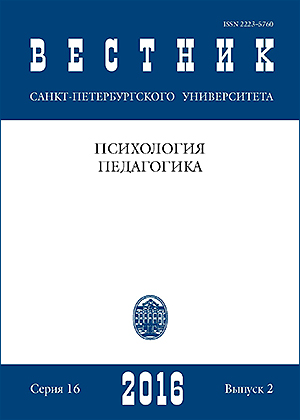Imagery perspective and its role in mental training of motor skills
Abstract
Th e article is intended to deduce a conceptual basis for the diff erence between external and internal imagery capacity to facilitate certain sport tasks. Features of a movement to be trained (i.e. importance of speed-strength, fi ne motor and spatial confi guration components), level of expertise of an athlete, his or her concentration on aforementioned aspects of an imagined movement, vividness of his or her imagery and focus on either concrete actions or total events are proposed to be considered as factors that determine specifi cs of a sport task in relation to expected eff ectiveness of external and internal imagery perspective
Keywords:
mental training, imagery perspective, motor skills acquisition, motivational function of imagery, action identification theory
Downloads
References
References
Published
How to Cite
Issue
Section
License
Articles of "Vestnik of Saint Petersburg University. Psychology" are open access distributed under the terms of the License Agreement with Saint Petersburg State University, which permits to the authors unrestricted distribution and self-archiving free of charge.




